5-8-3. SUCCESSIVE OR SIMULTANEOUS DEPARTURES
- Views Views: 2,246
- Last updated Last updated:
-
5-8-3. SUCCESSIVE OR SIMULTANEOUS DEPARTURES
TERMINAL
Separate aircraft departing from the same airport/heliport or adjacent airports/heliports in accordance with the following minima provided radar identification with the aircraft will be established within 1 mile of the takeoff runway end/helipad and courses will diverge by at least the minimum required, as stated below.
- NOTE:
- 1. FAA Order 8260.46, Departure Procedure (DP) Program, and FAA Order 8260.3, United States Standard for Terminal Instrument Procedures (TERPS), Volume 4, establishes guidelines for IFR departure turning procedures which assumes a climb to 400 feet above the departure end of runway (DER) elevation before a turn is commenced. TERPS criteria ensures obstacle clearance with a climb gradient of 200 feet per nautical mile from the DER. “Immediately after departure” is considered to be any turn that provides at least the minimum required of divergence that commences no later than 2 miles from the DER.
- 2. Consider known aircraft performance characteristics when applying initial separation to successive departing aircraft.
- 3. When one or both of the departure surfaces is a helipad, use the takeoff course of the helicopter as a reference, comparable to the centerline of a runway and the helipad center as the threshold.
- Between successive departures from the same runway/ helipad or parallel runways/helicopter takeoff courses
separated by less than 2,500 feet- 1 mile if courses diverge by 15 degrees or more immediately after departure.
(See FIG 5-8-1, FIG 5-8-2, and FIG 5-8-3.)
NOTE: RNAV SIDs specific to this paragraph are those SIDs constructed with a specific lateral path that begins at the DER.
FIG 5-8-1 Successive Departures 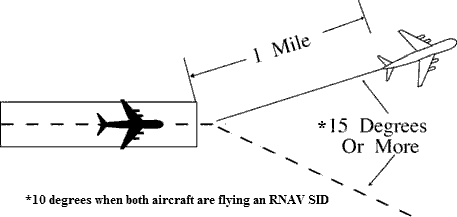
FIG 5-8-2 Simultaneous Departures 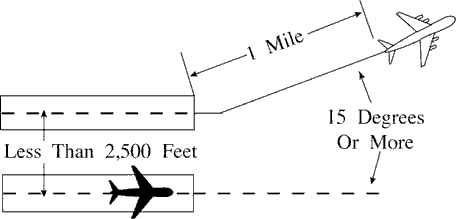
FIG 5-8-3 Simultaneous Departures 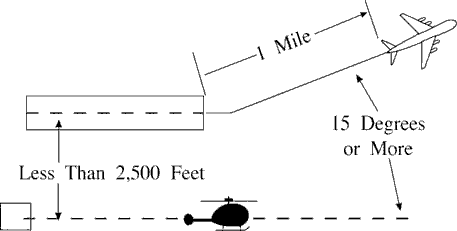
NOTE: This procedure does not apply when wake turbulence separation is required.
- Between simultaneous departures departing in the same direction from parallel runways/helicopter takeoff courses, authorize simultaneous takeoffs if the centerlines/takeoff courses are separated by at least 2,500 feet and courses diverge by 15 degrees or more immediately after departure. (See FIG 5-8-4, and FIG 5-8-5.)
- When both aircraft are flying an RNAV SID:
- Between successive departures from the same runway- 1 mile if courses diverge by 10 degrees or more
immediately after departure. (See FIG 5-8-1.)
NOTE: This procedure does not apply when wake turbulence separation is required.
- Between simultaneous departures from parallel runways/helicopter takeoff courses, authorize simultaneous takeoffs if the centerlines/takeoff courses are separated by at least 700 feet and less than 2,500 feet, courses diverge by 15 degrees or more, and departures are released in accordance with the release distance stagger stated in TBL 5-8-1 below.
-
Between simultaneous departures from parallel runways/helicopter takeoff courses, authorize simultaneous
takeoffs if the centerlines/takeoff courses are separated by at least 2,500 feet and courses diverge by 10
degrees or more immediately after departure. (See FIG 5-8-5, and FIG 5-8-6.)
NOTE: RNAV SIDs specific to this paragraph are those SIDs constructed with a specific lateral path that begins at the DER.
TBL 5-8-1 Departure Release Distances Distance to Divergence (Measured from the further DER) Minimum Centerline Separation Release Distance Stagger Immediately 700 1000 feet No later than 5 NM 1020 2000 feet No later than 8 NM 1130 3000 feet No later than 11 NM 1360 4000 feet NOTE: This procedure does not apply when wake turbulence separation is required.
FIG 5-8-4 Simultaneous Dependent Departures FIG 5-8-5 Parallel Runway Departures 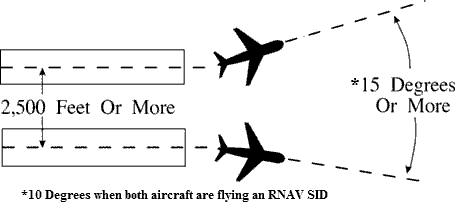
FIG 5-8-5 Parallel Helicopter Course Departures 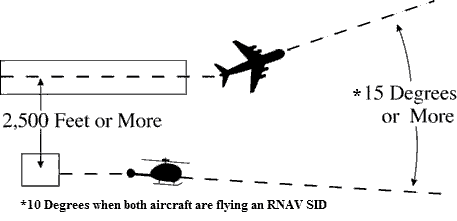
- Between successive departures from the same runway- 1 mile if courses diverge by 10 degrees or more
immediately after departure. (See FIG 5-8-1.)
- Between aircraft departing from diverging runways:
- Nonintersecting runways. Authorize simultaneous takeoffs if runways diverge by 15 degrees or more. (See FIG
5-8-7.)
FIG 5-8-7 Nonintersecting Runway Departures 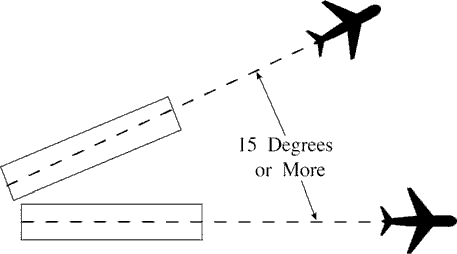
- Intersecting runways and/or helicopter takeoff courses which diverge by 15 degrees or more. Authorize
takeoff of a succeeding aircraft when the preceding aircraft has passed the point of runway and/or takeoff
course intersection. When applicable, apply the procedure in Paragraph 3-9-5, Anticipating Separation. (See
FIG 5-8-8 and FIG 5-8-9.)
FIG 5-8-8 Intersecting Runway Departures 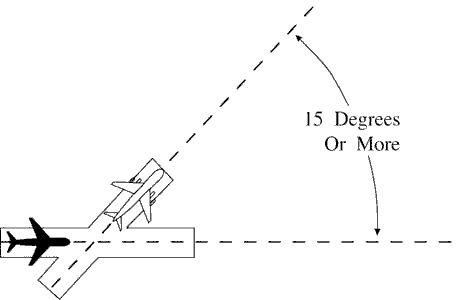
FIG 5-8-9 Intersecting Helicopter Course Departures 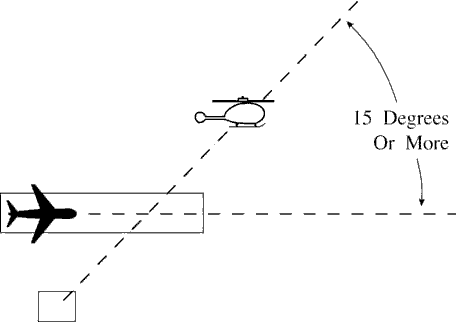
NOTE: This procedure does not apply when wake turbulence separation is required.
- Nonintersecting runways. Authorize simultaneous takeoffs if runways diverge by 15 degrees or more. (See FIG
5-8-7.)
